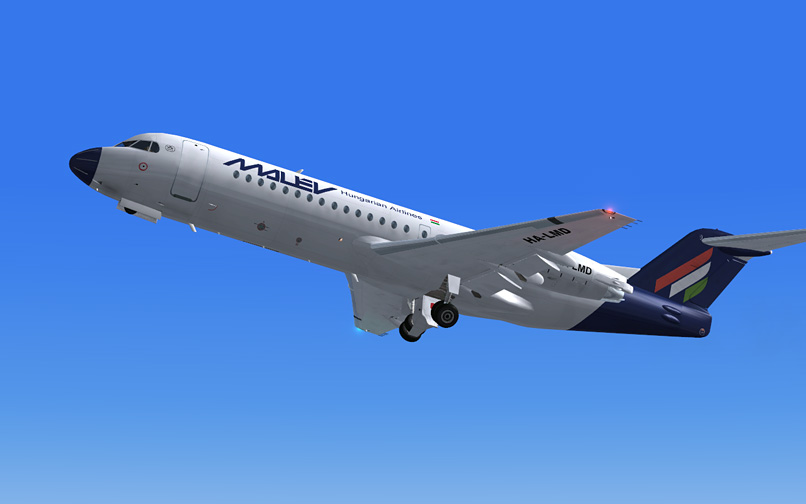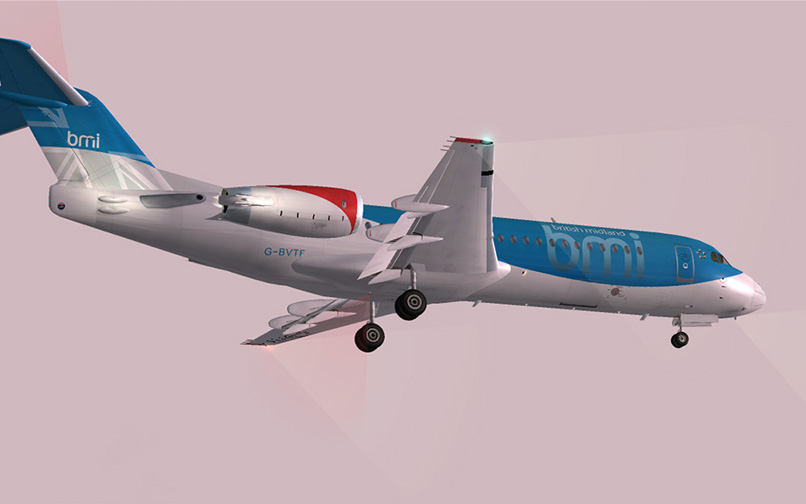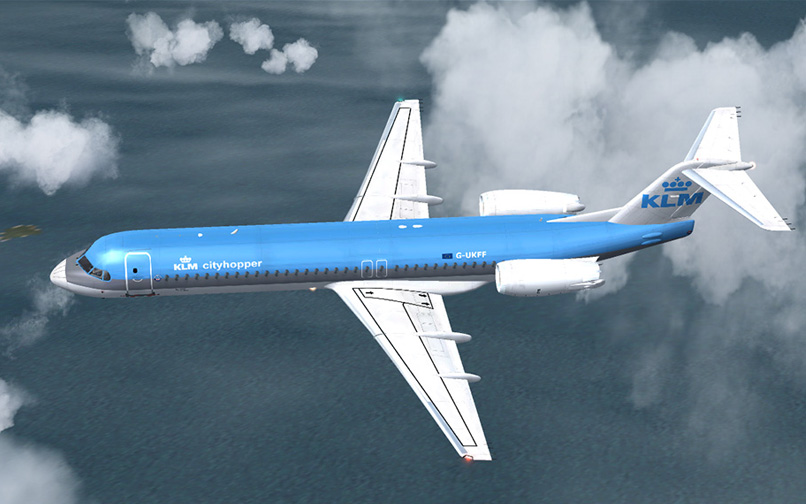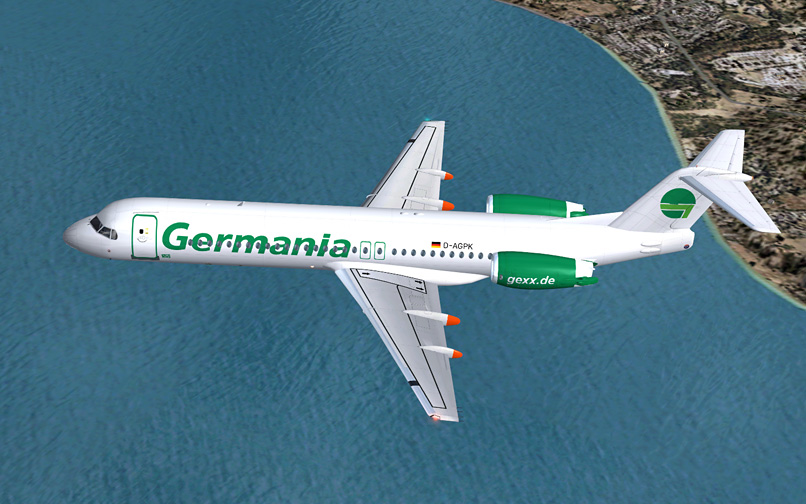Project Fokker Jetline F70/100
review
The Fokker 70/100 is a short-range, narrow body commercial passenger jet aircraft. The 79 seat F70 is a smaller version of the 79-122 seat F100. The F100 was announced in 1983 as an updated replacement for the F28 Fellowship. The most important changes are a stretched fuselage, more economical Rolls-Royce Tay turbofans, revised wing design, a modern EFIS glass cockpit and no eyebrow windows above the main cockpit windows. The F100 prototype first flew on November 30, 1986, while the second prototype, a F70, first flew on February 25, 1987. 283 F100s and 48 F70s had been built when the production ceased in early 1997 due to the collapse of Fokker in 1996.
Project Fokker Jetline is a Fokker-only freeware developer. Their F70/100 package contains one F70 and two F100 models, panel, sound package, 28 F100 liveries and 12 F70 liveries. The exterior model as well as the liveries are great and all animations seem to be accurate. Although only the most important systems are modeled, the panel looks realistic and works fine. The flight dynamics seem to be realistic and the autopilot is working perfectly. Download the major update (v3.0) for more features like GPWS.
--
the good
the bad
License |
: | Freeware |
Panel |
: | Yes |
Virtual Cockpit |
: | No |
Wingview |
: | Yes |
Sound |
: | Yes |
Developed for |
: | FS2004 |
Compatibility |
: | FS2004 FSX |
Wingflex |
: | No |
Landing gear |
: | Realistic |
Rudder effect |
: | Realistic |
FS2004 |
: |
|
FSX |
: |
|
Links
notes
1. Install the package into FS2004 if you haven't done so already.
2. Go to your FS2004 aircraft folder (e.g. C:\Program Files\Microsoft Games\Flight Simulator 9\Aircraft\ ) and copy these folders to the FSX aircraft folder (e.g. C:\Program Files\Microsoft Games\Microsoft Flight Simulator X\SimObjects\Airplanes\ ):
PF10070v2_F100_Tay-620
PF10070v2_F100_Tay-650
PF10070v2_F70_Tay-620
PF10070v2_sound
3. Go to your FS2004 effects folder (e.g. C:\Program Files\Microsoft Games\Flight Simulator 9\Effects\ ) and copy these files to the FSX effects folder (e.g. C:\Program Files\Microsoft Games\Microsoft Flight Simulator X\Effects\ ):
Fokker_ll.fx
Fokker_navgre.fx
Fokker_navred.fx
Fokker_strobeh.fx
Fokker_vclight.fx
fx_smoke_rx.fx
4. Open the panel.cfg file that is inside each aircraft folder (e.g. C:\Program Files\Microsoft Games\Microsoft Flight Simulator X\SimObjects\Airplanes\PF10070v2_F100_Tay-620\panel\panel.cfg) with notepad and change the content from:
[fltsim]
alias=PF10070v2_panel
to:
[fltsim]
alias=B737_800\panel
and then save the file. Do the same for the other two aircraft models (PF10070v2_F100_Tay-650 and PF10070v2_F70_Tay-620)
Next time when you start FSX, the aircraft should be visible in the aircraft selection list and work fine. In this case we're using the default Boeing 737-800 panel, but you can use any panel you like. Just change the alias to another aircraft by using the exact name of the aircraft folder (e.g. Airbus_A321).
If you like to see a thumbnail image for each livery, you need to make a screenshot of each livery of the aircraft and resize it to 256x128 pixels (use an image editor like photoshop, paintshop or whatever you prefer). Make sure the image format is JPG and name each of them "thumbnail.jpg". Then copy the image to each texture folder inside the aircraft folder (e.g. \PF10070v2_F100_Tay-620\Texture.alpiegl\ ).
Add a Comment





There are no comments for this aircraft